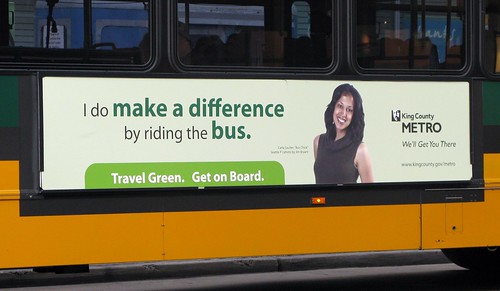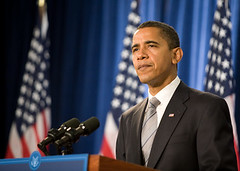This is why people hate politics? Anti-earmark politician wants to redefine earmarks to exclude transportation projects
(Source: Huffingtonpost; The Washington Monthly)
Let me make this clear upfront that my intention is not to make a political statement with this post. I’m simply trying to find a reason and logic (possibly seek help from others to find these elements in our society). Today’s Huff post had this article
“…On Tuesday morning, Rep. Michele Bachmann (R-Minn.) told the Minneapolis Star Tribune that she wants to redefine exactly what an earmark is. Specifically, she said, transportation projects should not be placed under the umbrella. Advocating for transportation projects for ones district in my mind does not equate to an earmark,” said the Minnesota Republican. “I don’t believe that building roads and bridges and interchanges should be considered an earmark… There’s a big difference between funding a tea pot museum and a bridge over a vital waterway.” The Star-Tribune notes that Bachmann “did solicit some earmarks when she first came to Congress” but “has been outspoken in pushing House Republicans to continue an earmark moratorium enacted last year.” But transportation funds are vital for job creation. And it seems likely that the reality of having a major spigot cut off is a bit frightening to even the self-proclaimed fiscal conservatives on the Hill.
Isn’t that what the White House was trying to accomplish via the Stimulus package – revitalize our nation’s infrastructure with targeted spending? Why did they take so much flak and blame for out of control spending? If such selective exclusions are to be made for one sector (i.e., transportation), why not make it possible for other sectors (i.e., agriculture, education, etc.)? Does this mean Ms. Bachmann would be supportive of building a High-speed rail network, which is identified (and funded) by the White House as an important piece of the nation’s future growth strategy, if it is funded as an earmark? Are Earmarks are bad, unless they’re going to Ms. Bachmann’s district? Cutting spending is good, except for the “legitimate projects that have to be done.”Are we missing something here?
Related articles
- Bachmann Wants Earmarks Redefined To Exclude Transportation Projects (huffingtonpost.com)
- Bachmann explains budgeting as only she can (washingtonmonthly.com)
- The Earmark Game (talkingpointsmemo.com)
- Leave Earmarks Alone (newser.com)
- Obama, Republicans agree: Reform culture of earmarks (ac360.blogs.cnn.com)
- Inhofe says he’ll keep earmarking (politico.com)
- GOP Supports Earmark Ban … for Now (pajamasmedia.com)
- Top Senate Republican joins push to stop earmarks (seattletimes.nwsource.com)
- After DeMint: How Will Senate Democrats Handle Earmarks? (swampland.blogs.time.com)
- Senate Democrat joins GOP pushing for earmark vote (seattletimes.nwsource.com)
- Mitch McConnell Changes Course, Moves to Ban Earmarks (politicsdaily.com)
- Conservative senator lauds McConnell on earmarks (seattletimes.nwsource.com)
- Chris Weigant: Tea Party Republicans Win Earmark Fight (huffingtonpost.com)
- Earmark Ban Won’t Get the Federal Deficit Under Control (politics.usnews.com)




 President Obama and Vice President Biden spoke with Transportation Secretary Ray LaHood Tuesday at Transportation Department headquarters, where they announced the first batch of stimulus funds getting distributed. In an interview with The Wall Street Journal, Mr. LaHood talked about spending stimulus money wisely, his opposition to an increase in the gasoline tax, new fuel emission standards and more. Below are edited excerpts from the interview.
President Obama and Vice President Biden spoke with Transportation Secretary Ray LaHood Tuesday at Transportation Department headquarters, where they announced the first batch of stimulus funds getting distributed. In an interview with The Wall Street Journal, Mr. LaHood talked about spending stimulus money wisely, his opposition to an increase in the gasoline tax, new fuel emission standards and more. Below are edited excerpts from the interview.